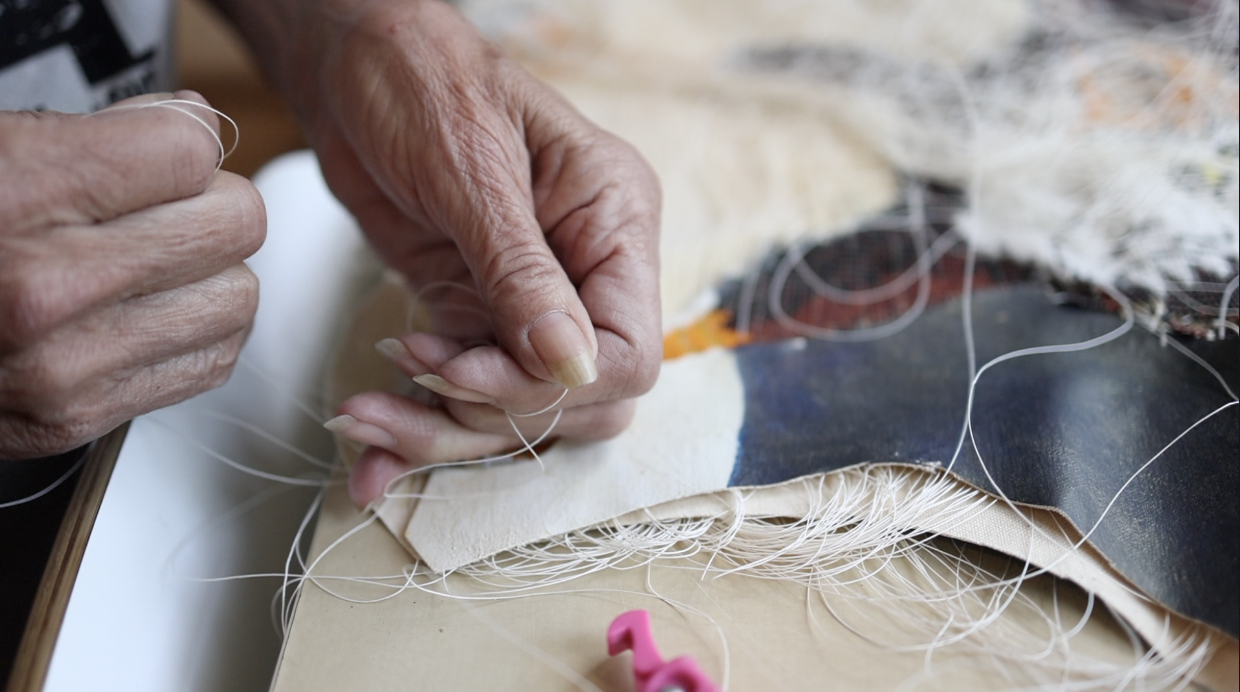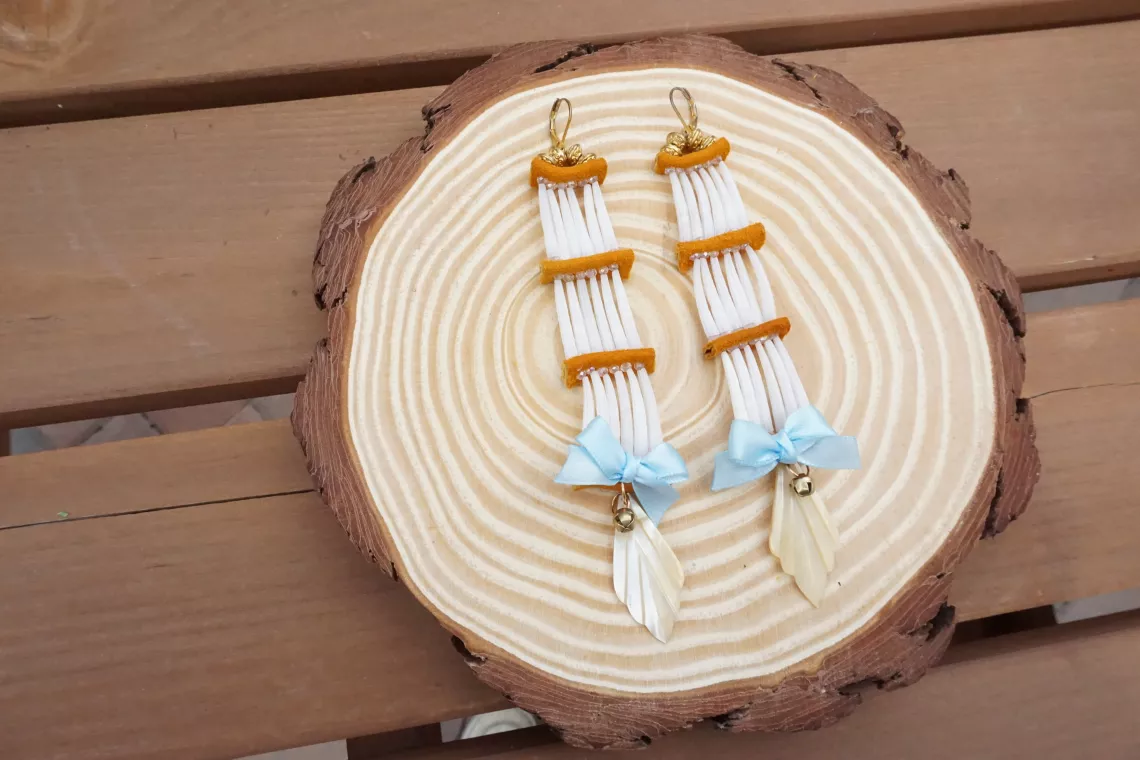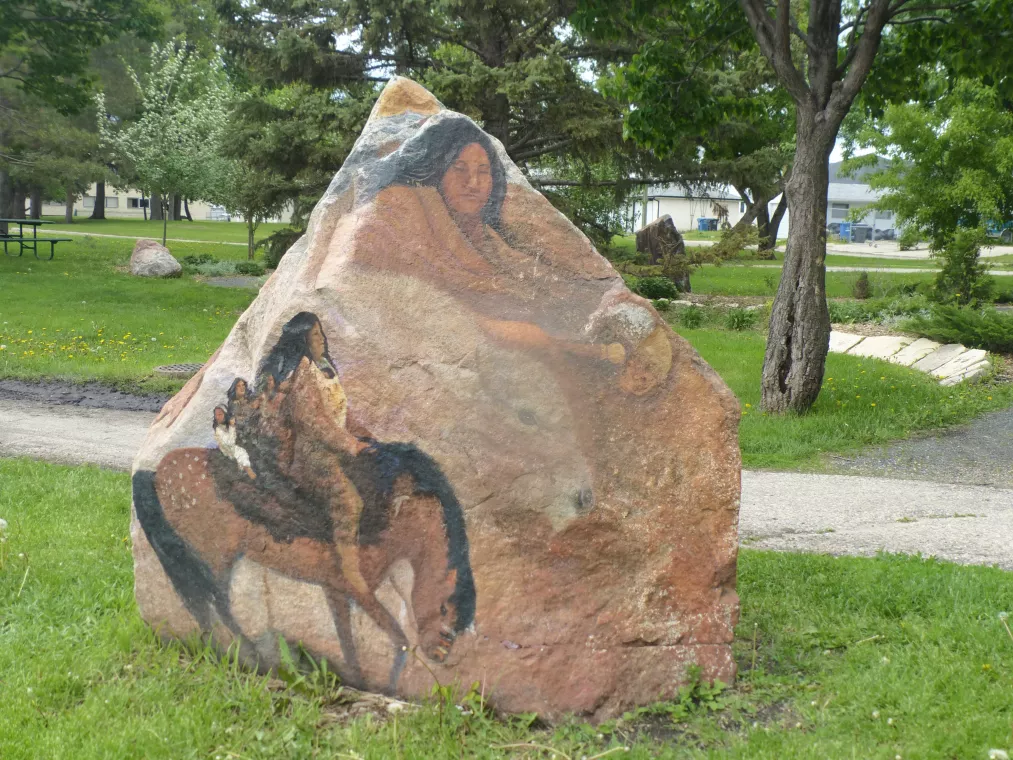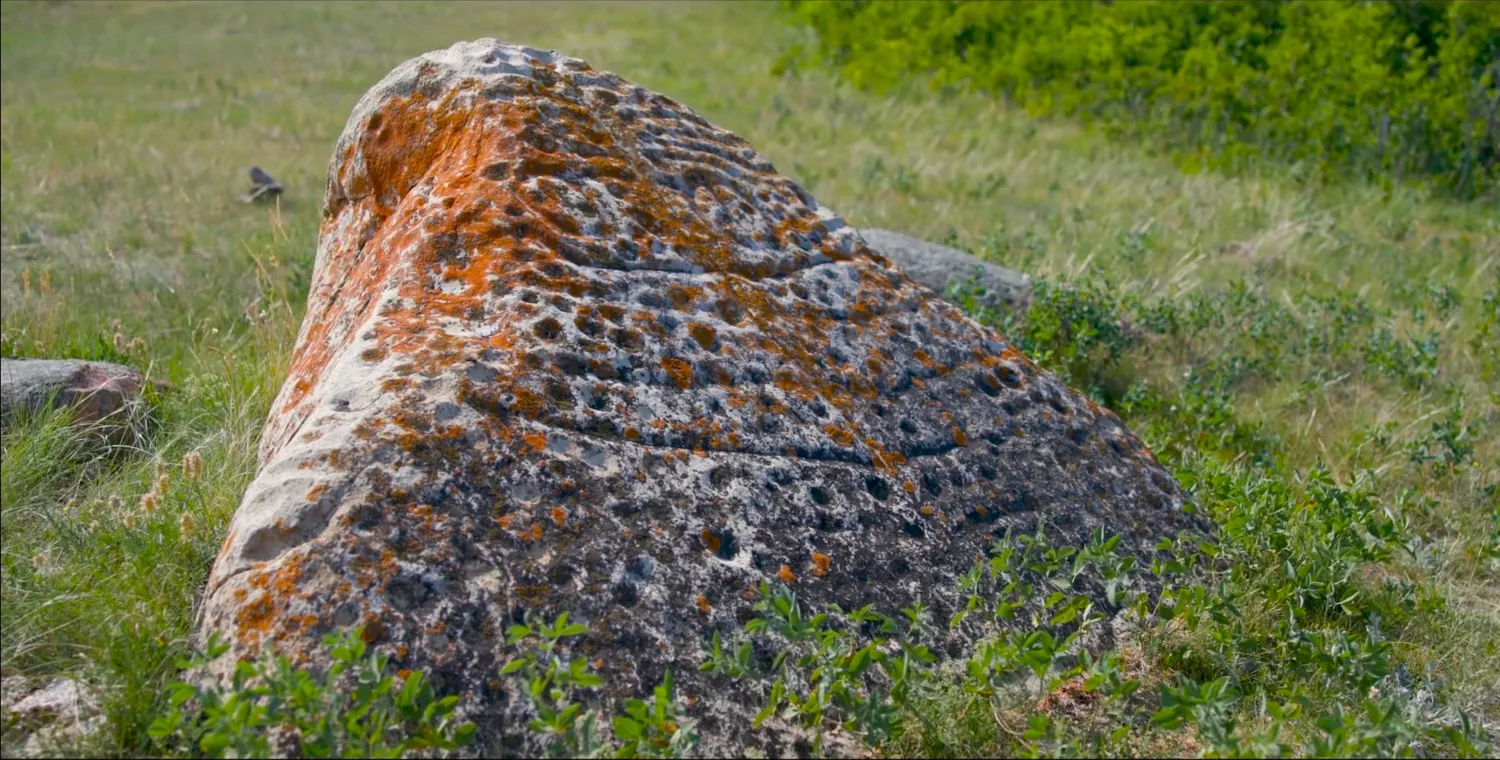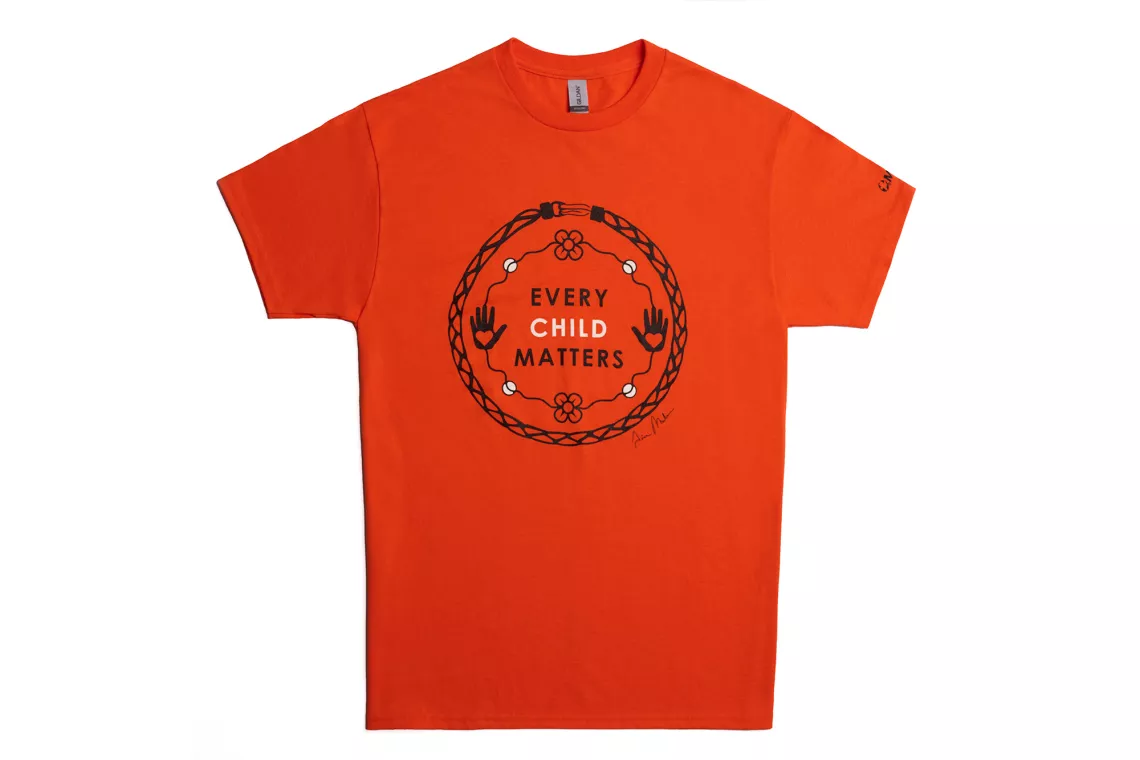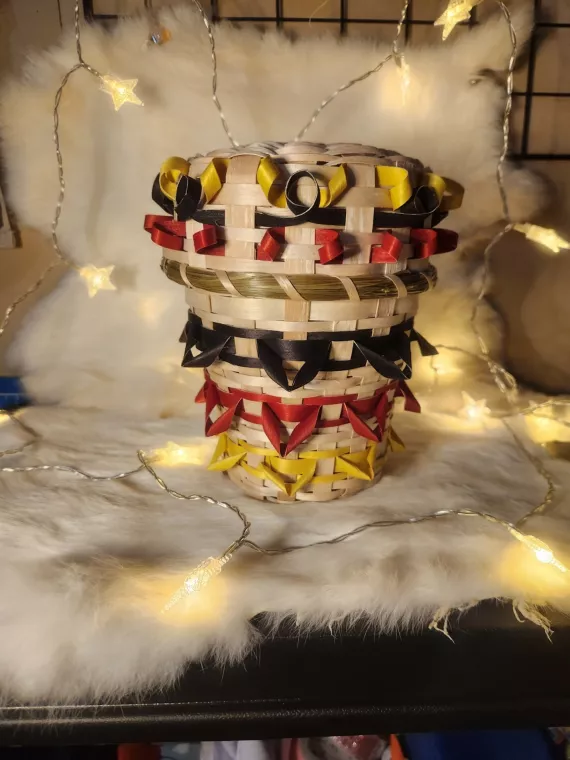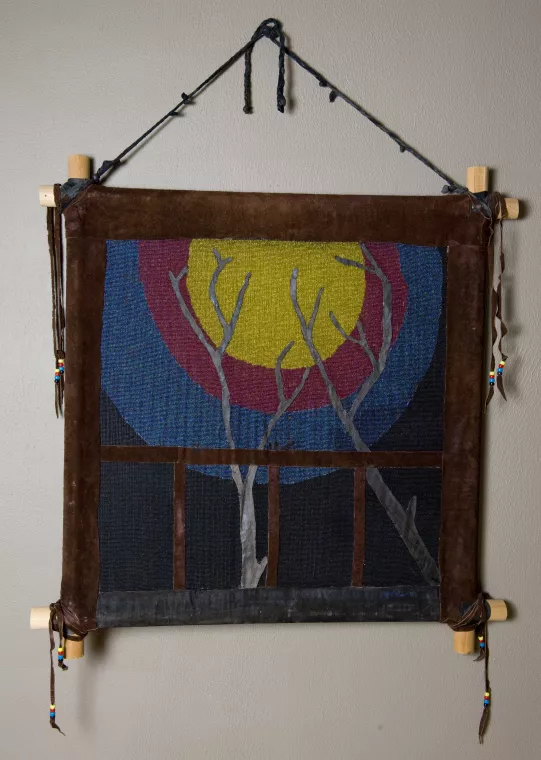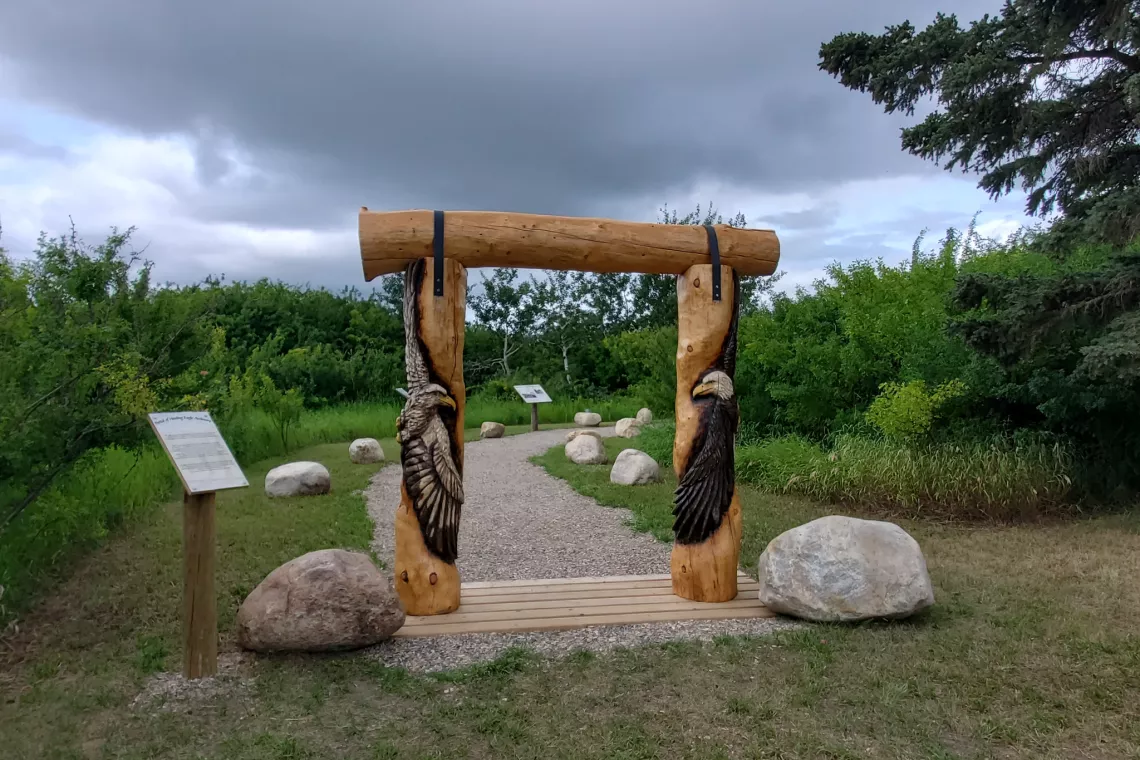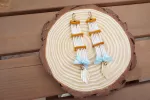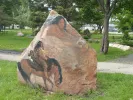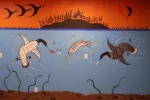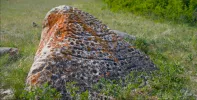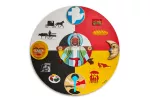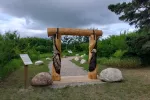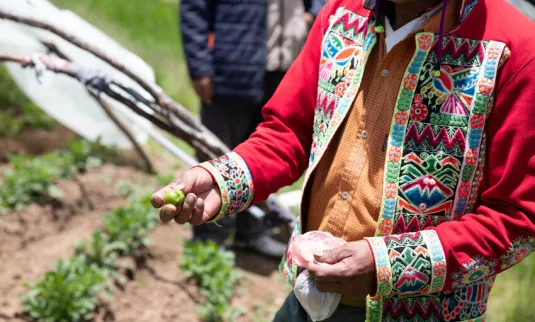A space for Indigenous art
Building respectful relationships is predicated on respect for Indigenous sovereignty. With regard to art, respect for sovereignty means that Indigenous artists exercise full control as the creators and owners of their art as an extension and expression of their unique voice.
Respect also includes an acknowledgement of the diversity of Indigenous cultures and perspectives represented in this art. Hundreds of Indigenous nations belong to and have deep connections to this land. Their diversity is reflected in this art exhibit. There is deep and rich wisdom in this diversity of perspectives and much to learn.
In celebrating this art, we also acknowledge the history of deep and destructive impact of colonialism, which Mennonites have both perpetuated and benefitted from. The impact of colonialism continues to reverberate and harm in real ways today. We are committed to supporting healing and justice efforts in many forms, guided by the Truth and Reconciliation Commission's calls to action.
This art presents one expression of the powerful and pervasive healing work being undertaken by Indigenous people across this land as they reclaim cultures, voices and ways of being. We are honored to humbly offer this platform for that power. We want to invite non-Indigenous people into another way of hearing and learning from Indigenous Peoples and have their perspectives challenged and broadened.
This is part of our healing as well as we seek to transform our hearts, relationships and systems of oppression that have caused so much harm. We remain attentive to the action-oriented learning we must do along the way. This healing work will take generations, but we continue on this path, alongside Indigenous partners, walking with hope and respect.
Scott Morton Ninomiya
Indigenous Neighbours Program, MCC Ontario
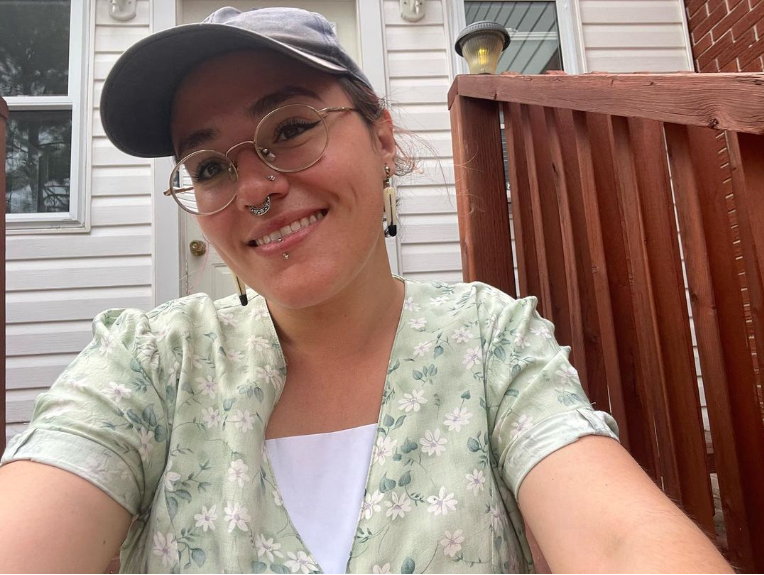
Riley Barnes
Medium: Jewelry
Home Base: Manitoulin Island, Ontario, Canada
Nation: Wiikwemkoong Unceded First Nation
Contact info (links open new window): Facebook, Instagram
Artist's Statement:
Aanii boozhoo, Riley Wahsekonesse Barnes n’dizhnikaaz, waabizheshi n’doodem minwaa Timmins n’dindaa. My name is Riley Wahsekonesse (Little Flower in the Eastern Syncopated Anishinaabemowin dialect) Barnes, Marten is my clan and Timmins is where I live. I am a member of Wiikwemkoong Unceded First Nation located on Manitoulin Island and have relational ties to Whitefish River First Nation just south of Espanola.
I began working at MCC Ontario in May in Timmins as an Indigenous Social Enterprise Associate for the Niska Artisan program (link opens in new window), and my goal is to bring my personal experience as an artisan to help guide the vision of the program as it finds its wings to soar higher each day.
I created these earrings, which consist of a mixture of both natural and synthetic material, however the dentalium shells are the focal point of the piece. Dentalium is historically and contemporarily a highly valued artistic resource, whose distribution followed pre-colonial trade routes. Since these trade relationships and routes predated Western contact, dentalium adornment can be considered one of the truly decolonized forms of Indigenous art and fashion.
The shells synthesize with the satin bows and jingle bells to create a delicate, coquette-inspired homage to traditional expressions of beauty.

Natalie Rostad-Desjarlais
Medium: Stone
Home Base: Manitoba, Canada
Nation: Metis/Anishinaabe
Contact info (link opens new window): Website
Artist's Statement:
My work is primarily derived from the inherent spirit of stone, these ancient record keepers shaped through chaos, trauma and time deliver messages of healing strength and honoring fateful pathways. These ancient messengers are reflections of the history & environment that they have endured through their journey. They rise eternal under a primordial quest for revelation and confirmation of their primary existence. In a journey of survival, we are much like them--shaped by our own experience of growth, trauma and movement through life, revealing our destiny, the true core of who we all become.
These four grandfathers and grandmothers sit in their chosen cardinal direction, and have their own color, animal, stage of life, season and messages.
- East- Eagle, birth, spring, yellow
- South- Coyote, childhood, summer, red
- West- Bear, maturity, fall, black
- North- White Buffalo, Elder, winter, white
Spirituality comes in many forms and each person will see what they can relate to and perhaps be able to identify with them. The messages the stones share from the images, both obvious and subliminal, come full circle to offer an insight of authenticity and raw emotion.
A place of reflection is this healing garden, a sacred and honoring space inspired by the memory and suffering of residential school children.
The four direction stones are located at the Kapabamayak Achaak Healing Forest (link opens in new window), a partnership of Mennonite Central Committee Manitoba’s Indigenous Neighbours program.
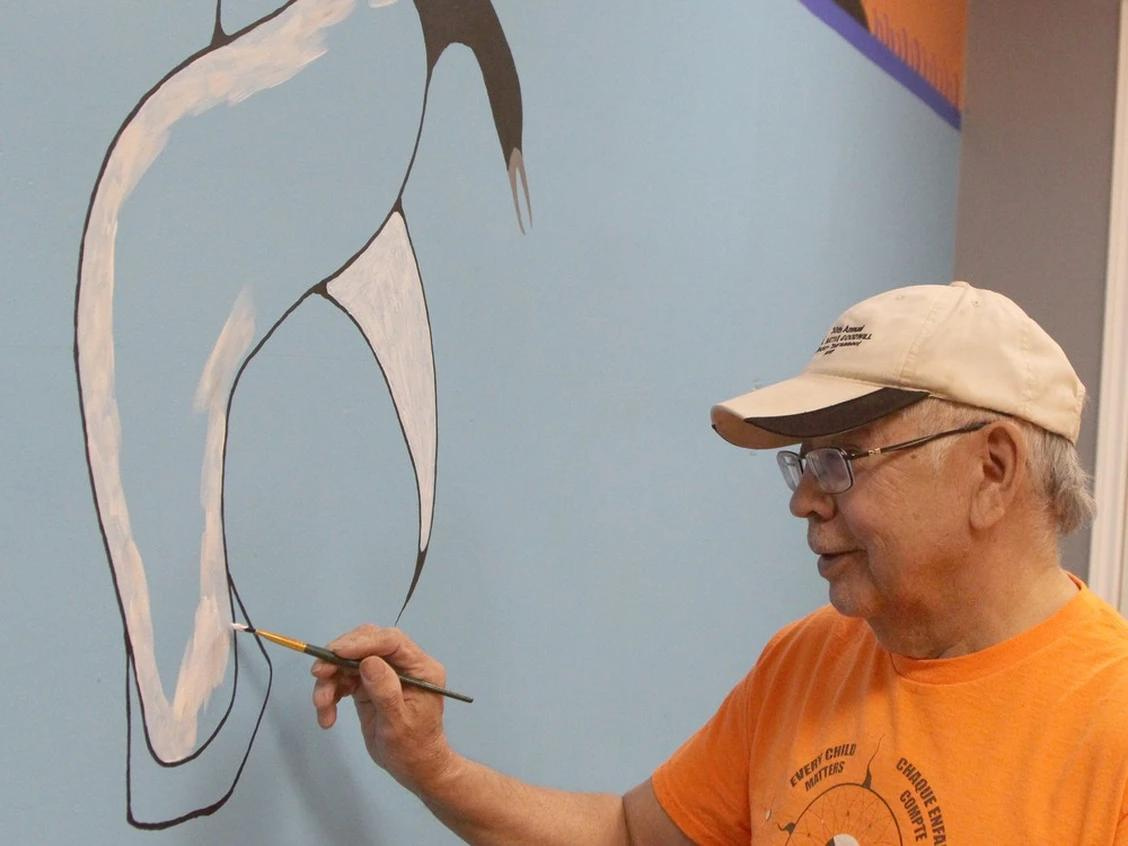
John and Emily Etherington
Medium: Mural
Home Base: Kapuskasing, Ontario, Canada
Nation: Cree
Artist's Statement:
This mural was created by John and Emily Etherington, Cree multidisciplinary artists based in Kapuskasing, Ontario. They are well known for their tamarack goose making workshops. John is an avid soapstone carver and also creates beautiful visual art. The two travel across Ontario teaching and creating art. They have been working together for 45 years. They are also long-time partners of Mennonite Central Committee (MCC) Ontario, sharing their gift of art as a tool for teaching and bridging cultures for decades, together with the MCC team in Timmins.
This stunning mural is a center piece of the Timmins MCC office. It depicts the beauty and power of the north, Treaty 9 Territory (link opens in new window), and the many relationships that are interconnected on the land that Cree people like Emily and John have called home since time immemorial. MCC have been guests on the land for over three decades as we humbly seek our place in the web of relationships on the land and in the community.
We are deeply honored that the Etheringtons have generously shared their talent in this way to help create a space that can be used and enjoyed by other artists who partner with MCC in the Niska Artisan project (link opens in new window). Together with many community partners we will continue to develop this space to facilitate healing, hope, cultural resurgence, learning and peace.
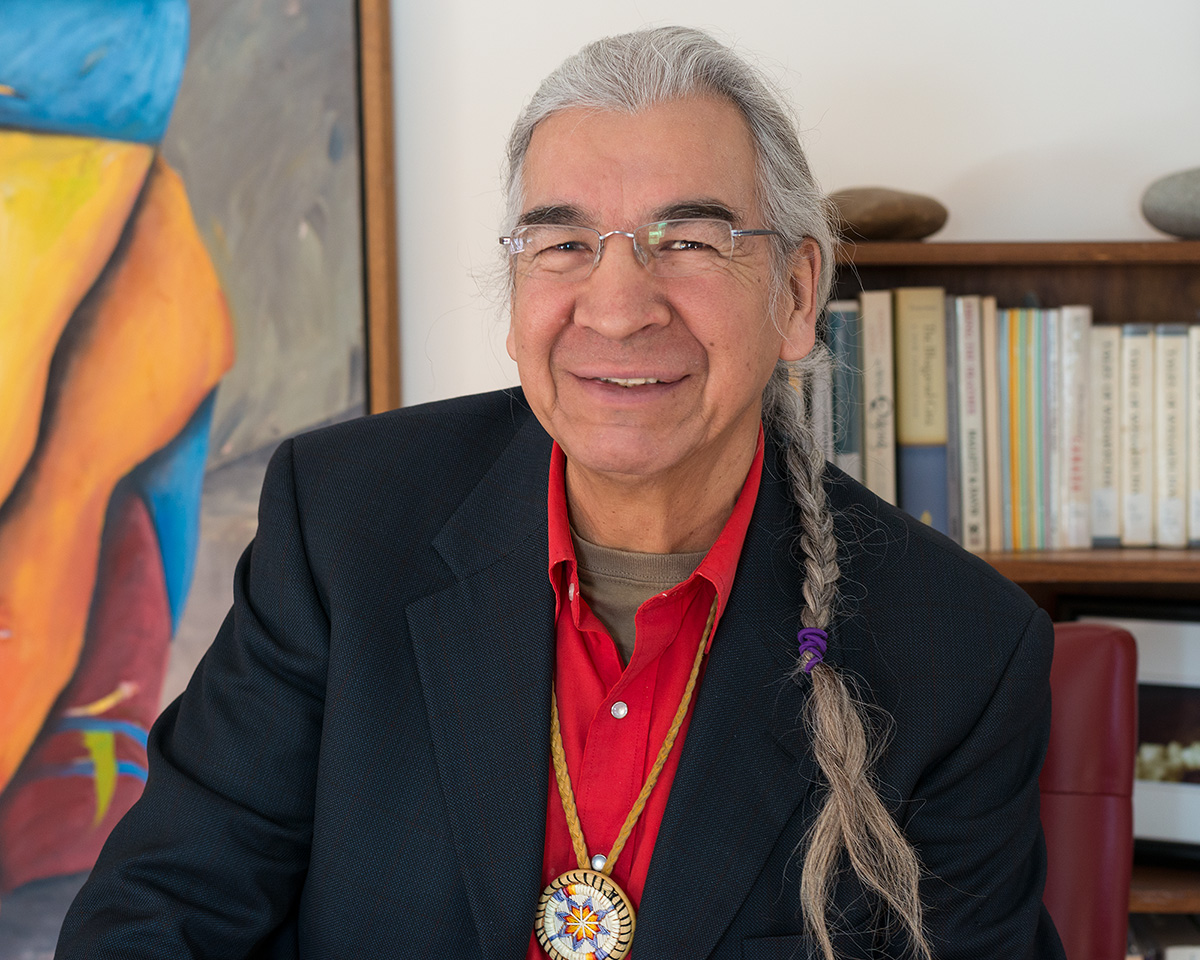
Joseph Naytowhow
Medium: Ancient petroglyph
Home Base: Sturgeon Lake First Nation Band, Saskatchewan, Canada
Nation: Plains/Woodland Cree (nehiyaw)
Contact info (links open new window): Website, Facebook
Cultural Advisor's Statement:
asinīy ohci ātayohkēwin (stone being's sacred story)
What story does grandfather stone hold? I often ask myself this question knowing that grandfather stones hold secrets to where I presently live and carry out the traditions of my people; the nēhiyawak (Cree).
I’ve visited the asinīy (stone being), at Herschel more than once and am still mesmerized by its unusual markings which tell me a two legged being (human), presumably Indigenous, touched, and performed a sacred pipe bowl-stem ceremony before gently inscribing its body. What do these impressions mean? Perhaps only the individual who inscribed grandfather stone knows. Year after year people from all around the globe come to this special place to pay homage and in some cases leave a tobacco offering in honor.
I am a nēhiyaw purification sweat lodge keeper. As such, I am familiar with the stone people. I have songs about asinīy ohci ayisīyinīmak (our stone people) and whenever I arrive at the place where such sacred beings sit and hold space on the land, I sing one of their songs. For example, there is a brief heart inspired song my father gifted to me before crossing over to the spirit world. He loved mountains and it is where he took his last walk, sang his last song, and took his last breath.
“asinīwaciy iyiniw opipikwan pēhtākwaniw”
“Mountain being, your eagle bone flute sounds out”
I have already lifted my sacred pipe bowl and sacred stem in ceremony near the sacred stone situated at Ancient Echoes, Herschel, Saskatchewan. It is my intention to do a purification sweat lodge ceremony at the site one day. It would be appropriate, and it would be a great honour to do so.
All asinīy ohci ayisīyinīmak (mountain stone beings) are a family scattered many thousands of years ago, by natural law. They represent healing, strength, truth, transformation and are the story-keepers about life from the beginning of time. Many tribes/nations of Indigenous people from the four directions have come to visit Herschel, to walk on and greet the land and to speak to this special stone. I, too, have visited and met my friend and elder, David Neufeld, there. He informed me of the possible meanings to the special markings on the rock - grandfather stone. He has been a guiding light throughout the times I have visited Ancient Echoes with respect to the importance of this site.
The presence of this stone restores our collective mind as “all one people”. It is sacred. This land will continue to bring together human beings regardless of color, race, and faith. Perhaps the asinīy kā-nīpawit (standing rock) with its many capules represents the transition from bison to human beings which came from all directions to populate this land, including many indigenous people from various nations who reference the land as “Mother Earth”. They foresaw the coming of the wāpsikīyiniw (white toned skin beings). Today, it is now also known as Canada (kanāta).
I have, with guidance from Elders, studied and served as their apprentice over the years. May my sacred story, about how I understand asinīy ohci ātayohkēwin (mountain stone beings’ stories) help each of us to generate meaning for ourselves.
I carry a gold-plated bronze replica of a treaty four medal with me for ceremony, school presentations on Indigenous awareness and cultural gatherings. I also use special stones as sharing or “talking” stones. They are like my close friends. They are kept in my vehicle to ensure safe passage wherever I go. My friend Donna Kay from northwest Saskatchewan gifted me a piyēsiw asinīy (thunder stone) a few years ago. It is shaped in a perfect sphere. It is a medicine rock and whomever carries these thunderstruck special stones will understand their energetic capabilities.
hiy hiy (With respect, may it be so.)
©2024josephnaytowhow
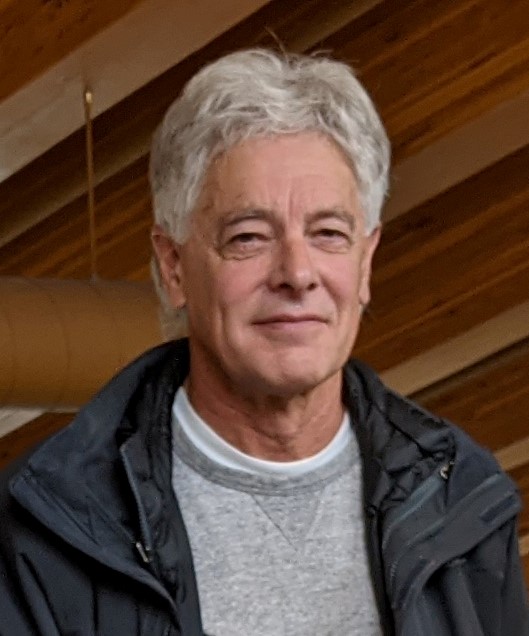
Bryan Stephenson
Medium: Wood & acrylic paint
Home Base: British Columbia, Canada
Nation: Métis
Artist's Statement:
My name is Bryan Stephenson. I am a Métis artist. After hearing MCC’s response to the TRC’s Calls to Action #48 and #49, at an Annual General Meeting in British Columbia, I was moved and offered to create a piece of artwork for MCC.
Outside-In tells the story of the identity, history, and century-long commitment of the Mennonite Central Committee (MCC) through the eyes of a non-affiliated Métis individual.
The four colored segments portray MCC’s four great efforts that have brought MCC to where it is today, or perhaps due to the “outside”-world’s current events, full-circle.
White (The Mental): Throughout the 1870s, newly arrived Russian Mennonites were “granted” large blocks of settlement lands where Canadian Prime Minster John A. MacDonald had recently “reserved” as a peace-treaty compensation for First Nations and Métis “to enjoy forever.” Dispossessed from their farms, homes, and way-of-life, the Métis became the first case of Canadian mass homelessness and become known as “the road-side Indians.”
Red (The Physical): MCC relief work began in the 1920s when southern Russian citizens (now Ukraine) faced starvation due to lack of farm equipment. MCC coordinated two shipments of Fordson tractors under the call “for bread,” which became the symbolic cry for emergency food assistance.
Yellow (The Emotional): MCC has helped families suffering in various conflicts, which is underscored by its advocacy initiatives, opposing violence and promoting peace for all people around the world.
Black (The Spiritual): MCC partners with organizations around the world to tackle malnutrition by providing nutritional education and necessities at three levels: individual, household, and societal.
The Clock-Face (Inspirational): The clock-face motif, featuring the hands of the Son of God, is a symbol that time does not exist, but change does. As a clock requires working hands, positive transformation also requires working hands.
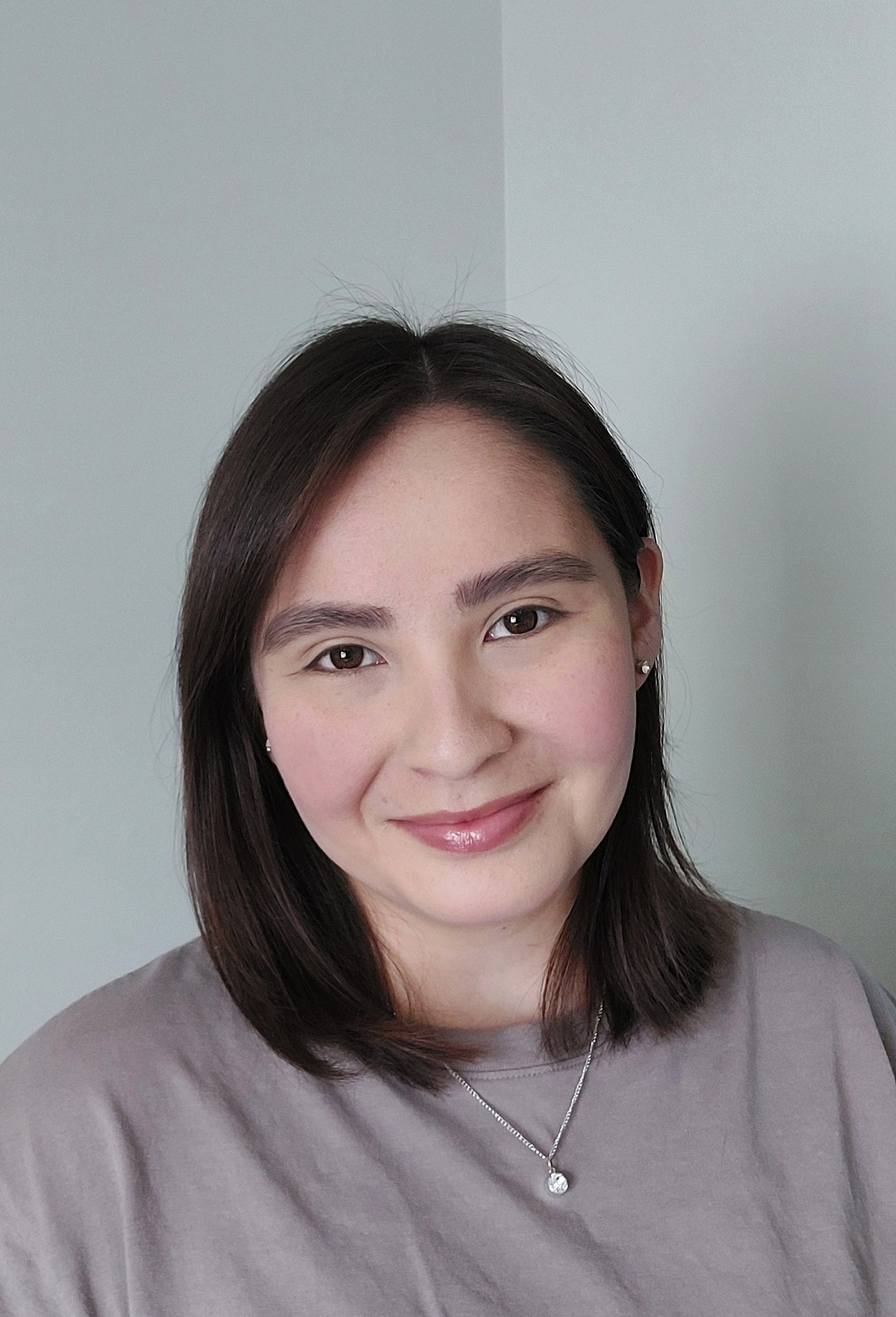
Tina Monkman
Medium: Digital artwork screen-printed onto a cotton shirt
Home Base: British Columbia, Canada
Nation: Ojibway and Cree
Contact info (link opens new window): Instagram
Artist's Statement:
My name is Tina Monkman, I am part Ojibway and Cree. As a student at Columbia Bible College, I had the opportunity to do two years of my practicum with MCC BC. With this opportunity, I built relationships and had the chance to create something that is now being recognized throughout Canada. Together, we partnered in making an Orange Shirt for the National Day for Truth and Reconciliation.
One of the things, as humans, we generally value is the gift of children. In our society, children have and always will be the most vulnerable and sacred aspect of our existence.
Orange Shirt Day has become a beacon in North America and parts of the world. It has connected us to common ground, where children’s safety becomes the priority.
In one way or another, we all value children. With this movement, it has transformed the relationships that were once broken to begin a journey of healing for the wrongs that have been placed within our Indigenous communities, as well as the generations of trauma and pain that followed.
The design for the Orange Shirt was intentional. I designed an outer circle of sweet grass. Sweet grass is usually braided, which signifies healing and peace. The inner circle that has two hands with a heart in the center represents the children. The four little circles represent the four directions: North, East, South, and West. It is the belief that humans are tied to all things. The line that runs through the circles represents the interconnectedness that we all share as humans.
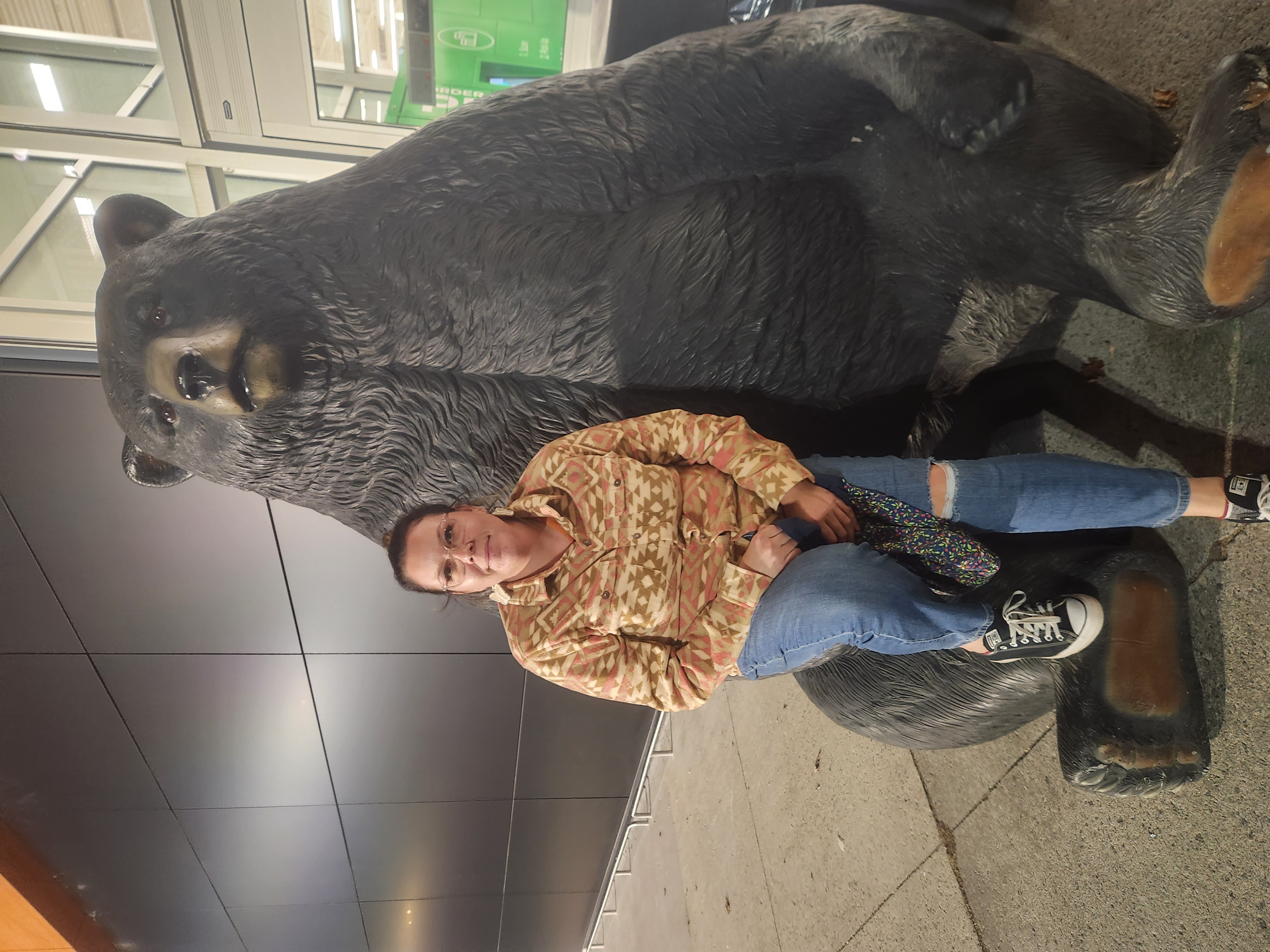
Erika G. Marchand
Medium: Basket weaving
Home Base: Listuguj and Gesgapegiag, Gespe'gewa'gi, Mi'gma'gi, Quebec, Canada
Nation: Mi'gmaw
Contact info (links open new window): Website, Instagram, TikTok
Artist's Statement:
I took the title of “Transforming Relationships” to demonstrate what it means to a Mi’gmaw artist. I chose this piece of artwork of the fancy black ash basket because the legacy of basketry is in my community and has been passed down from generation to generation. The gift of basket weaving is in my blood memory. The first time I made a basket as a child, I remember being a natural. This relationship with basket weaving over the generations has transformed to include some contemporary features such as the commercial dyes.
The materials used for this artwork are gifts from Mother Earth – the land – which represents the theme and importance of reciprocity in relationships with each other and these earthly gifts.
Ongoing processes of colonialism have profoundly shaped and affected relations between the Canadian State and First Nations, and non-Indigenous and Indigenous peoples. Settler consciousness, which permeates through nearly every aspect of mainstream society, has allowed colonial practices and narratives to remain dominant within Canada.
With this artwork, I envision a future where people of all cultures on Mother Earth live together peacefully, while working together to dismantle oppression and discrimination – a future that is built on love and respect for each person and living being.
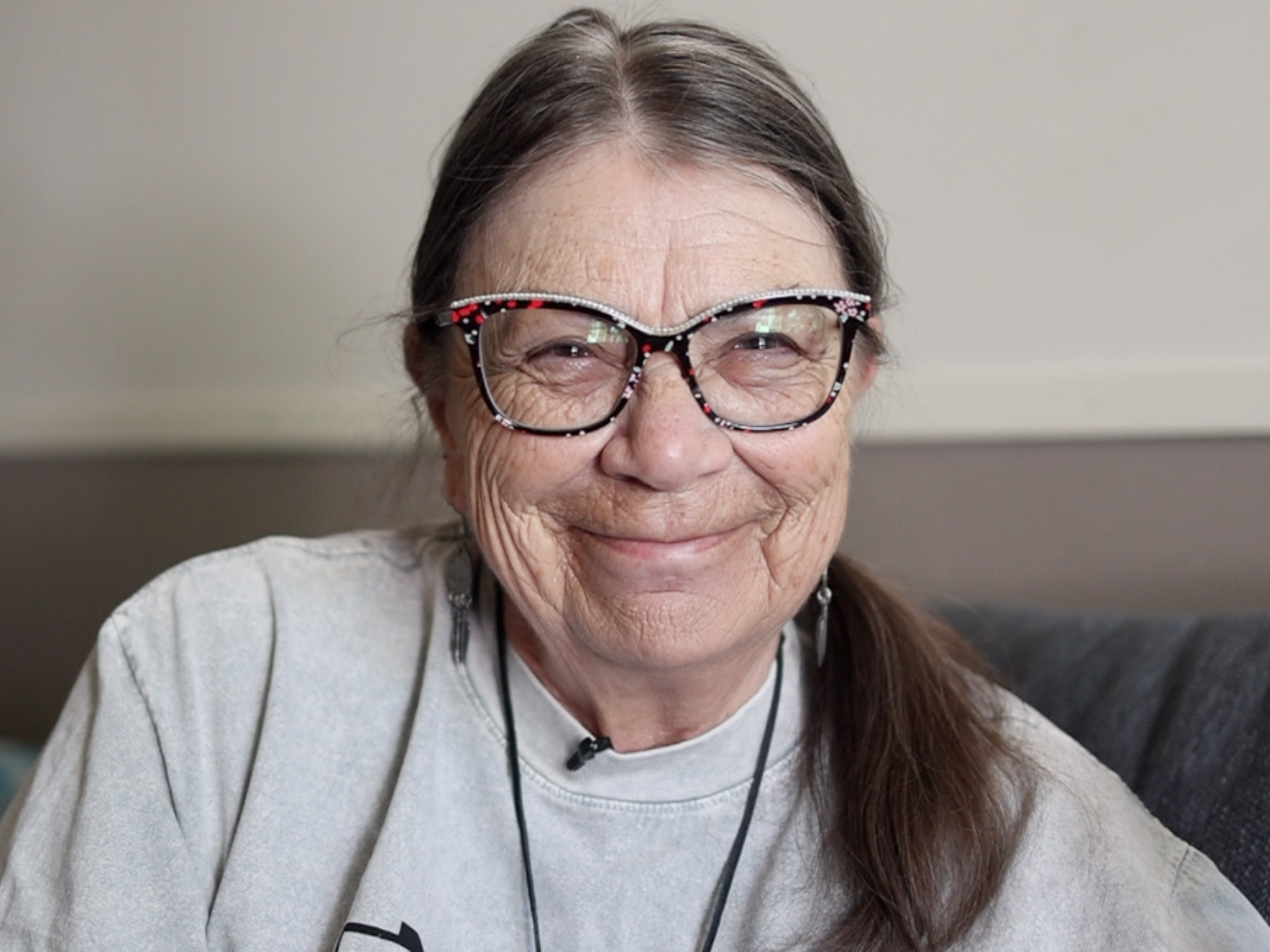
Val Vint
Medium: Beadwork/Poetry
Home Base: Manitoba, Canada
Nation: Metis/Anishinaabe
Artist profile video:
Artist's Statement:
Val Vint is co-chair of the Kapabamayak Achaak Healing Forest, a partnership of Mennonite Central Committee Manitoba’s Indigenous Neighbours program. Vint has submitted a poem in lieu of an artist's statement:
That Little Girl and The Moon
All that sleepy little girl had to do was tip up her chin and look up through the window to see the moon get herself tangled in the branches of the trees outside.
The moon looked after that little girl often in the night and that little girl loved the moon.
The moon sang to that little girl lullabies, in the cry of the whip-poor-will and the call of the loon. She shushed her and soothed her and gently kissed her when she cried. That little girl went to the moon and snuggled deeply in her warm embrace. The moon told her stories and calmed that little girl’s soul. The moon washed the stained memories from that little girl’s skin and gave her a place to hide.
She hid that little girl from
her father
her uncle
her mother’s lover.
She’s scared again that little girl. She cries and the moon feels her pain. Her cries awaken the memories hidden within my skin. My skin knows the secrets that little girl told to the moon. I want to wash my skin and like that little girl, I want my skin to forget
the pain,
the shame.
I understand now why the moon speaks to me. She has been by me always, giving me strength and soothing my soul. She sang to me lullabies, in the cry of the whip-poor-will and the call of the loon. She shushed me and soothed me and kissed away my tears. She washed the memories from my skin and gave me a place to hide.
She hid me from
her father
her uncle
her mother’s lover.
Val T. Vint ’93
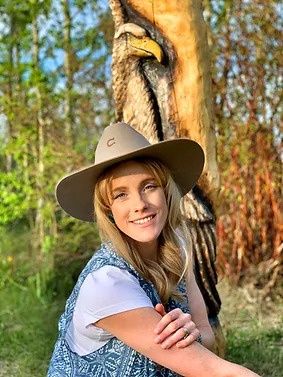
Michelle Thevenot
Medium: Sculpture
Home Base: Saskatchewan, Canada
Nation: See below
Contact info (link opens new window): Website
Artist's Statement:
This artwork embodies the convergence of Indigenous and non-Indigenous relationships, symbolizing the transformative journey towards healing and understanding. Inspired by the profound narrative shared by my Indigenous friend, Enza, my sculpture Portal of Healing portrays the intergenerational path towards renewal.
During a moment of reflection by the river, I witnessed two eagles soaring overhead — an adult guiding a juvenile. This resonated deeply with Enza’s story of overcoming intergenerational trauma, setting a new course for herself and her daughter. These majestic eagles became the centerpiece of my archway, representing the older generation paving the way for the young — a metaphor for healing and hope.
The artwork stands as a symbolic marker at Stoney Knoll, echoing the Reserve 107 story and the collective journey toward reconciliation between the local Cree, Mennonite, and Lutheran communities. It invites viewers to engage with narratives that bridge divides and foster mutual understanding. Through storytelling and art, we shape new pathways of empathy and intergenerational healing, enriching our shared heritage and propelling us towards a future of unity. Portal of Healing is more than art — it’s a testament to the power of dialogue, empathy, and transformation in our relationships.
Michelle Thevenot is not an Indigenous artist, and neither she nor MCC considers this piece as “Indigenous art.” But everything about this piece — its inspiration and blessing by her Indigenous friend Enza, its selection by a joint Indigenous-settler committee for inclusion at the Stoney Knoll Interpretive Site, and that site’s story as a unique expression of ongoing reconciliation between settlers and nehiyawak (Cree) — commends it for this gallery on Transforming Relationships.

Robert Spence
Medium: Digital art
Home Base: Split Lake, Manitoba, Canada
Nation: Tataskweyak Cree
Artist's Statement:
The Churchill River Sturgeon lives within the restricted confines of Manitoba Hydro's Man-ipulated devastated environment. The Churchill River Sturgeon is expected to live a natural life in an unnatural environment created by the hand of man-- Manitoba Hydro! With its shrinking habitat and its limited movements, it is finding it harder to survive in a system made for the benefit of profit and gains. All of this while it loses more and more of its natural ability to move, survive, and thrive. Its survival is dictated by man-made laws, rules, legislations, and policies that determine how much habitat it is able to move around in.
The bulb is representative of that confined space where it is left to survive and thrive in. No longer able to move about in a natural habitat, its fate is sealed by a number stamped into its body to quantify its existence on the Churchill River--much like the Indian that is made to prove its legal personhood as an Indigenous person. Identified, numbered, and cataloged to prove its existence...We share the same fate as the Churchill River Sturgeon as we too have to live within the lines of our reserves and identify ourselves by the numbers we too are given.
Robert Spence, Tataskweyak Cree Nation, is a friend of the Interfaith Council of Hydropower (link opens new window), a partnership of MCC Manitoba.
* Profile photo courtesy of canadianmennonite.org
Get involved
There are many ways to get involved as we work together to walk humbly with our Indigenous neighbors around the globe, advocating for justice and working for peace.


